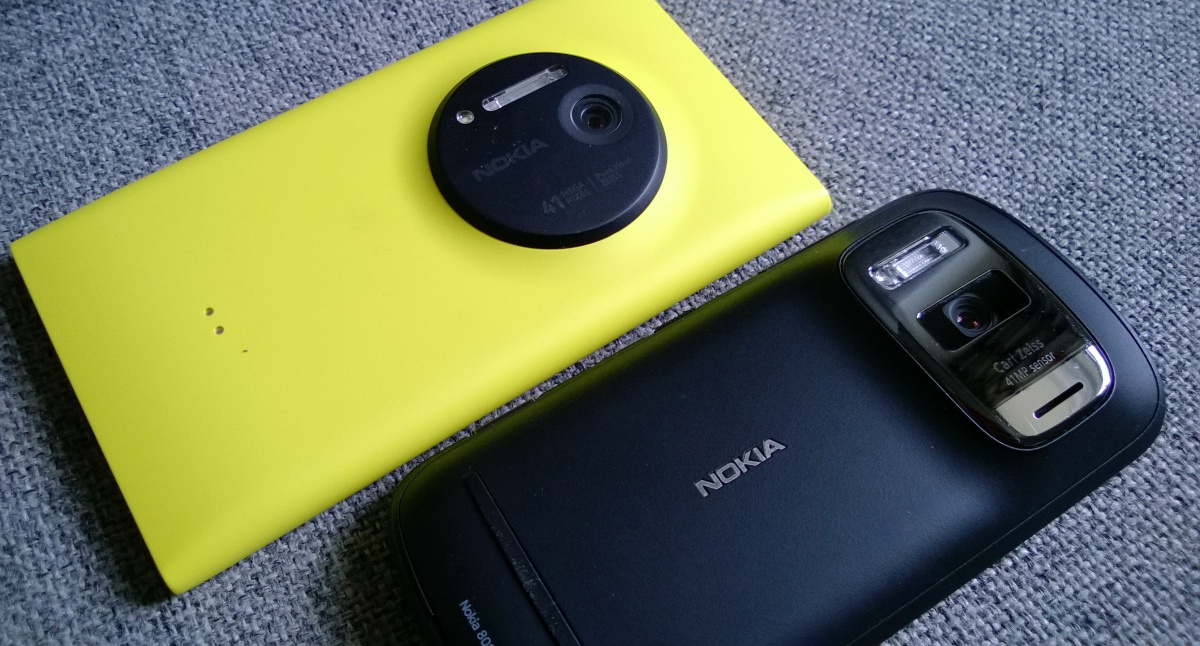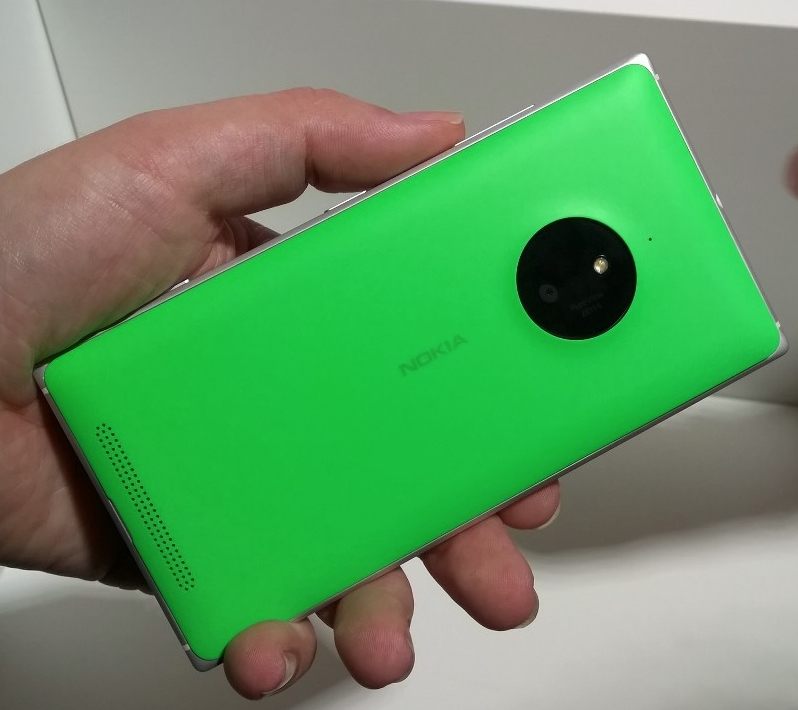The story so far:
- 2012: The Nokia 808 PureView is launched, with a huge 1/1.2" hardware-accelerated 41MP oversampling camera, with shot to shot times a fraction of a second. Imaging is very well respected, there's Xenon flash too, but it's the tail end of the ever-less-supported Symbian OS and ecosystem.

- 2013: The Nokia Lumia 1020 is launched, with a slightly smaller 1/1.5" sensored 41MP camera, implementing much the same algorithms (plus the ability to reframe from the full image later) but handled by the phone's main processor, resulting in shot to shot times as high as four seconds. There's Xenon flash again, though(!), plus OIS, which helps. Again, the 1020 is at the tail end of a platform, this time the Snapdragon S4 range within Windows Phone, resulting in generally slow performance even when not in the main camera application.
- end-2013/start 2014: The Lumia 1520, then Lumia Icon and 930 were launched, with a 1/2.5" 21MP sensor that has similar functionality to the 1020 but with the next-gen Snapdragons powering the image processing and only half as much image data to handle at a time, resulting in shot to shot times of just less than one second. OIS, but only LED flash though.
The smartphone imaging fan in me, at this point, wanted to see Nokia - or rather Microsoft these days - attempt to reimagine the 1020, updating it with a Snapdragon 800 or 801, and bringing shot to shot times down to around a second (just my estimate). With the Xenon flash, the PureView zoom, the high end oversampling, plus the new chipset meaning that Windows Phone itself didn't behave too badly, we'd have something of an outright winner.
Alas no. While it's possible that such a device - say, the mythical Lumia 1030 - might be released, looking at the tea leaves in the mobile industry (the top Android smartphones and the iPhone have moved to computational photography, taking multiple shots very fast and then doing clever things with them) I'd say that this is now very unlikely, especially with Microsoft in charge and less scope for Finnish quirky extravagance.
- September 2014: Microsoft launches the Nokia Lumia 830, with 10MP 'PureView' camera that has OIS but only a small 1/3.4" sensor and no oversampling at all. The key benefits here are supposed to be the 'Dynamic flash' (achieved through taking a shot without LED flash and then very quickly taking another with) and 'Rich capture' (similarly, taking several shots at different exposures very quickly and then letting the user merge these as required).

Leaving aside my worries that all these techniques (on the 830 and on other competing phones) utterly rely on the subject not moving at all (so a laughing or giggling subject would be blurred, etc.), the trend in the industry is clear - never mind the physics, make a camera that's barely good enough but which is thin enough to fit in a phone only 8mm or so thick and then use burst mode techniques to let users get creative with the results.
Part of the 'Denim' platform update, the new 'Lumia Camera' application, according to Microsoft, is a revision of Nokia Camera (Lumia Camera was being called 'Lumia Camera 5' on the Microsoft demo stands, while the current Nokia Camera is up to v4.8) and enables:
- shot to shot time of only a small fraction of a second
- bursts of 4K or 2K video (depending on hardware) and then stripping out still 'moments' for use as photos
- dynamic flash and rich capture functions, depending on whether the LED flash is enabled or not in the interface
Microsoft did say that the new application will be on the Lumia 830, hopefully at launch, plus will be coming to the 1520, Icon and 930 in due course. Now, the obvious question is what about all the relatively time consuming oversampling on the latter three devices. How can we have tiny shot to shot time when there are so many pixels to process? Is the oversampling being quietly forgotten?
It turns out (according to Juha, still on the imaging team and now at Microsoft) that the processors in the 1520, Icon and 930 are powerful enough that oversampling can be done in the background. On the 830, the shot is simply taken, encoded to JPG and stored in the background, while on the slightly older devices the shot gets taken and then UI immediately returned for the user to take another photo, while the quad core Snapdragon 800 chipset chugs away behind the scenes, performing the usual oversampling and encoding.
With such a schema, Juha estimates that the 1520 (et al) will be capable of two to three shots per second. Not as fast as the likes of the HTC One devices, but still fast enough for almost all users. And yet with the oversampling still in place.

So. What about the imaging flagship, the Lumia 1020? The Snapdragon S4 is significantly less powerful, plus there's twice as much image data to handle and up to four times as much oversampling processing - this is the reason why the new Lumia Camera functions won't be available for the 1020 - there's not enough oomph available to do all the background processing required. Juha confirmed that 'achieving smooth experience would be very difficult'. To say the least.
There's little point then, in complaining about the speed of the 1020 camera or that Lumia Camera/Denim's functions won't be backported. If you must have the 41MP sensor and Xenon and speed then the old Nokia 808 is still available! If you can live without Xenon and oversampling then the new Lumia 830 looks like a good bet. If you want a good compromise, with some oversampling, good speed and can live with LED flash, then the Lumia 930 is probably the best option. or the 1520 if you fancy veering into 'phablet' territory (the 1520 is a great device).
Having established that there's little point in complaining - the 1020, based on a 2012 chipset, is limited by its own specs and physics - there's an extra option, of course. Live with the 1020 as-is, producing nigh on perfect oversampled images, getting crisp Xenon-frozen social snaps, and so on. All it requires is a little patience in terms of startup and shot to shot time. It could be argued that it's all about planning ahead?
As the Rolling Stones once sang, 'you can't always get what you want, but you might just get what you need'. Interpret that whichever way you want to and let us know if you're going to stick with the 1020 or move on, in the comments below!
